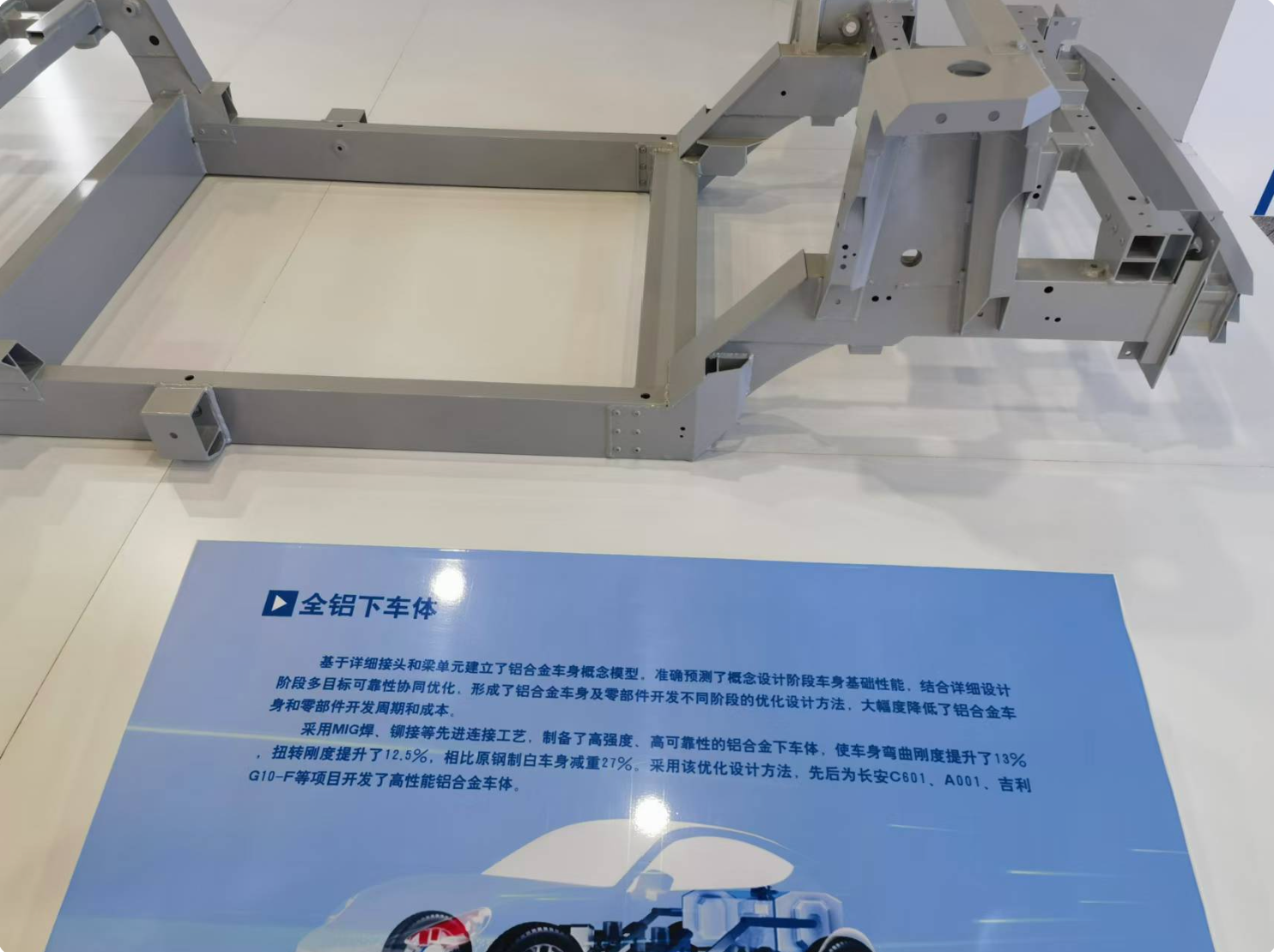 Bridging News
Bridging News
Aluminum Body Technology Boosts Chongqing's Global Automotive Edge | Insights
Chongqing - "Over a decade ago, Chinese-made cars used minimal aluminum alloy components, lagging behind top international brands," said Li Luoxing, Director of the Vehicle Virtual Development and Lightweight Technology Innovation Center at the HNU Research Institute in Chongqing, to Bridging News. "Today, after years of dedicated R&D, our aluminum materials and manufacturing processes have achieved advanced global standards."
 Aluminum body samples developed by the Research Institute of HNU in Chongqing. (Photo/Lin Bai)
Aluminum body samples developed by the Research Institute of HNU in Chongqing. (Photo/Lin Bai)
Aluminum body material development
"Aluminum alloy, with its high specific strength, stiffness, and recyclability, is an ideal material for automotive lightweighting," Li explained. "However, fragmented domestic research and a lack of standardized design, manufacturing, and performance controls have kept production costs high, while product consistency and stability still fall short of automotive standards."
Li's team began their research in Chongqing to meet the urgent market demand for high-performance, cost-effective aluminum alloy bodies and components as early as 2007. Invited by Changan Automobile, they set out to develop advanced aluminum alloy materials for automotive bodies.
The widespread use of aluminum alloy in car bodies faces three main challenges: achieving performance requirements such as crash absorption, handling complex processing demands, and the absence of established design standards and databases.
Li stated that, to address these challenges, the team focused on materials, structure, and processing, developing a series of high-strength, weldable, energy-absorbing aluminum alloys for automotive bodies.
They also developed a precision-controlled extrusion process that lowered production costs to global standards. They also introduced an online monitoring and heat treatment method for aluminum aging, significantly boosting product consistency and reliability.
The team is now focusing on advancing 3D printing technology for aluminum alloys. Li explained that automotive parts are typically made by forging aluminum ingots and using Computer Numerical Control (CNC) machining. This process involves first forging aluminum ingots, then precisely cutting and shaping them with CNC machines, which results in low material efficiency, long production cycles, and high costs—factors that drive up automakers' annual expenses.
Another approach, integrated die-casting, is popular in electric vehicle production. This method forms structural components in a single step by pouring molten aluminum into a mold. However, it requires long mold preparation times.
In contrast, Li noted that 3D printing does not require molds, can flexibly accommodate different designs, and is ideal for customized, small-batch production, especially for niche or international markets like right-hand drive models. Li says 3D printing reduces the development cycle by 10 days, boosts material efficiency by 60%, and cuts manufacturing costs by a third. Large 3D-printed aluminum alloy components developed by the team have already been installed and road-tested by leading domestic automakers.
 The testing facility at the Research Institute of HNU in Chongqing. (Photo/the Research Institute of HNU in Chongqing)
The testing facility at the Research Institute of HNU in Chongqing. (Photo/the Research Institute of HNU in Chongqing)
Steel-aluminum hybrid body
Li and his team developed Changan's first steel-aluminum hybrid car body to support Changan Automobile’s shift toward new energy vehicles (NEV). Li noted that lightweight design is now essential in automotive manufacturing, with widely adopted materials like aluminum alloys and high-strength steel. Following the "right material in the right place" principle, steel-aluminum hybrid body technology has emerged as a key solution for electric vehicles.
The challenge with hybrid bodies lies in joining dissimilar metals, as traditional spot welding is used for rapid metal heating, and welding does not work for steel and aluminum. Instead, the team employed riveting, which joins the metals with rivets. However, domestic research on these core techniques is still emerging, leading to longer development cycles and higher costs for hybrid bodies compared to traditional steel ones.
To tackle these issues, Li and his team analyzed structural and strength changes around rivets in the riveting process, creating a high-precision simulation model that replicates the mechanical properties of riveted joints. This model predicts deformation and failure behaviors in critical components during riveting, allowing faster validation of the hybrid body design and reducing time and costs.
This steel-aluminum hybrid body technology laid the foundation for Avatr Technology’s vehicle bodywork. Created by Changan in partnership with Huawei and CATL, Avatr models 11 and 12, built on this hybrid body innovation, have attracted significant attention and praise both domestically and internationally.
 Related Stories
Related Stories